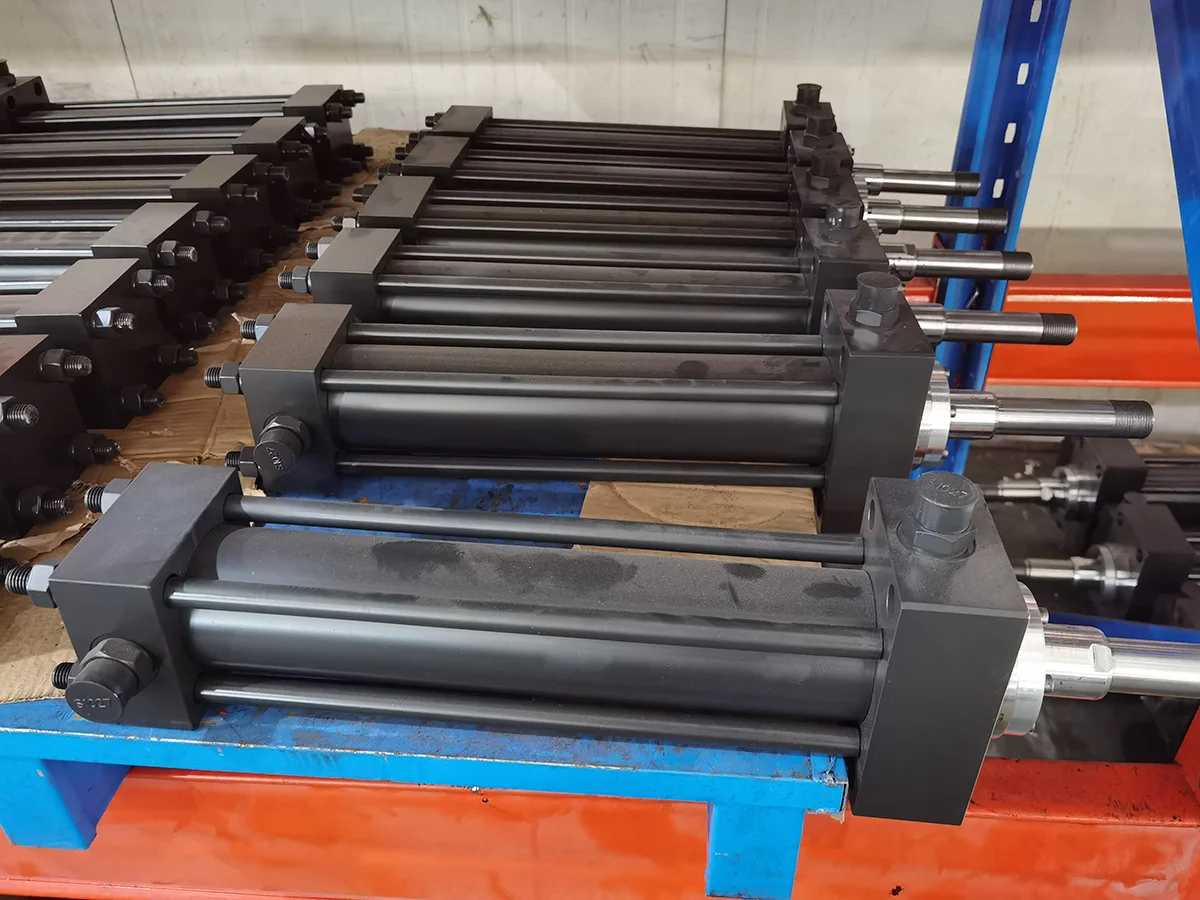The history and future development trends of tie rod cylinder
As an important part of the hydraulic transmission field, tie rod cylinder plays a vital role in industrial production and mechanical equipment. This article will review the historical development of tie rod cylinders and discuss its future development trends.

The tie rod cylinder's history dates back to the early 19th century when the Industrial Revolution created a need for more efficient capabilities. The earliest tie rod cylinder had a simple design, consisting of a piston, a cylinder body, and a piston rod. With the advancement of industrial technology, the design of tie rod cylinders has gradually improved, and the selection of materials and processing techniques have also been improved. At the beginning of the 20th century, the application of hydraulic technology promoted the development of tie rod cylinders, making them widely used in various industries. Over time, the performance and reliability of tie rod cylinders continued to improve, becoming an indispensable component in modern industry.
At present, tie rod cylinders have become one of the most common actuators in hydraulic systems. Its simple structure, high reliability, and strong load-bearing capacity make it widely used in various industries. Especially in the fields of machinery manufacturing, metallurgy, mining, construction, and agriculture, tie rod cylinder plays an important role. With the advancement of industrial automation, the demand for tie rod cylinders continues to increase, and the market size continues to expand.
Future trends
Application of innovative materials: With the continuous emergence of new materials, the material selection of tie rod cylinders will become more diverse. The application of new materials such as high-strength alloys and composite materials will improve the performance and life of the tie rod cylinder while reducing its weight and improving work efficiency.
Intelligence and automation: With the arrival of Industry 4.0, tie rod cylinders will become increasingly intelligent and automated. The combination of sensors, actuators, and control systems will enable tie rod cylinders to achieve more precise motion control and position feedback, improving production efficiency and product quality.
Energy saving and environmental protection: The energy-saving and environmental protection characteristics of tie rod cylinders will become an important direction for future development. By optimizing the design and control system, we can reduce energy loss and emissions, improve energy utilization efficiency, and meet the requirements of sustainable development.
Remote monitoring and maintenance: With the development of Internet of Things technology, tie rod cylinders will be able to achieve remote monitoring and maintenance. Through the connection of sensors and the Internet, the working status and health status of the tie rod cylinder can be monitored in real-time, fault diagnosis and repair can be carried out in a timely manner, and the reliability and availability of the equipment can be improved.
Customization and personalization: With the diversification of market demand, customization and personalization of tie rod cylinders will become the future trend. According to the needs of different industries and applications, tie rod cylinders are custom-designed and manufactured to provide more suitable solutions and products.
As an important component of the hydraulic system, the tie rod cylinder's historical development and future trends are of great significance to the industrial field. Through continuous innovation and technological progress, tie rod cylinders will play a role in a wider range of fields and meet the changing market needs. At the same time, the development of tie rod cylinders also needs to cooperate with other hydraulic components and systems to jointly promote the progress and application of hydraulic technology. In the future, tie rod cylinders will continue to develop to provide more reliable and efficient solutions for industrial automation and smart manufacturing.
Why is the tie rod cylinder popular?
How to choose the right tie rod cylinder for your hydraulic system
Tie rod cylinder maintenance and care guide
Tie Rod Cylinder: The backbone of industrial applications
Choosing the right tie rod cylinder: the perfect match for your engineering needs
Analyze the structure and working principle of tie rod cylinder
Hydraulic weapon: tie rod cylinder classification analysis and application
Key components in hydraulic systems: reliability and life evaluation of tie rod cylinder
How to choose a quality tie rod cylinder manufacturer: key strategies and considerations
Protect your investment: effective anti-corrosion measures for tie rod cylinders
Hydraulic tie rod cylinder sealing technology: the key to optimized performance and extended life
Detailed explanation of precautions and operating procedures for safe use of tie rod cylinders
Factors and analysis affecting the price of tie rod cylinders
Material selection for tie rod cylinders: a balance between performance and application
tie rod cylinder and welded cylinder, which one to choose?
mia
peterchen@jinhai.cn
Post Comment